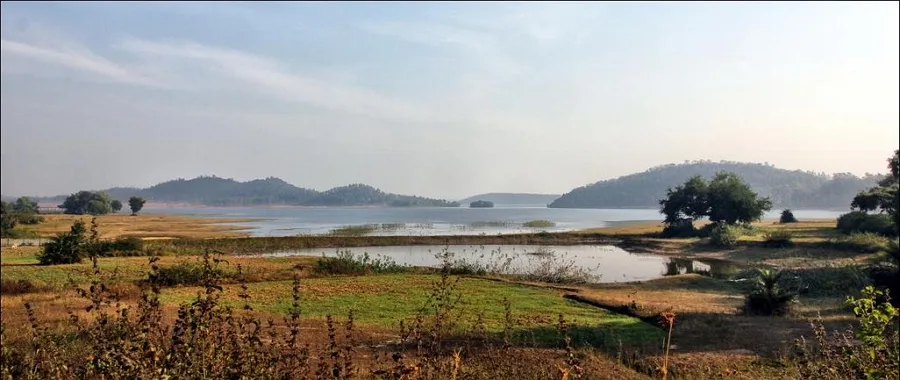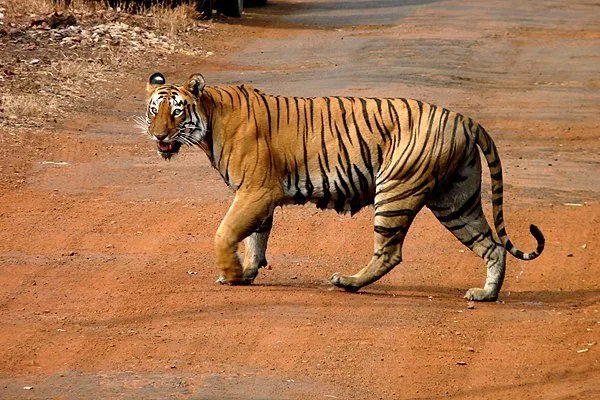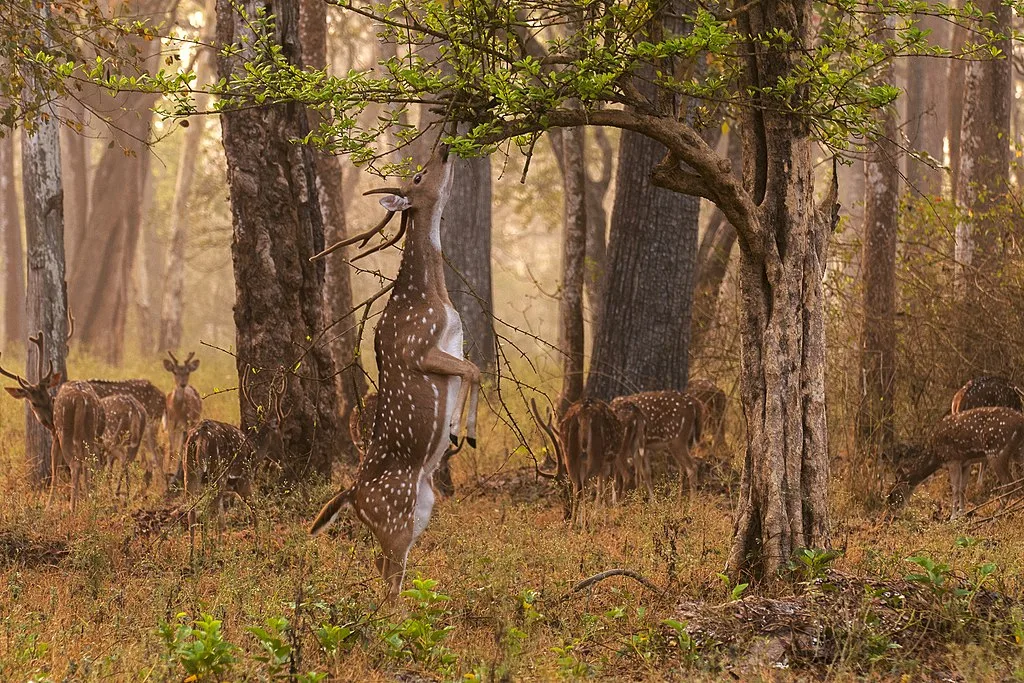Nestled in the rugged landscapes of Bihar, India, Valmiki National Park emerges as a sanctuary of untamed beauty and rich biodiversity. This national park, situated in the West Champaran district, invites wildlife enthusiasts and nature lovers to explore its diverse ecosystems. As we embark on an exploration of Valmiki National Park, we will unravel its historical significance, the intricate dance of flora and fauna, and the immersive experiences that await those eager to connect with nature in this hidden gem.
What is Valmiki National Park Famous For?

Valmiki National Park is celebrated for its unique blend of diverse ecosystems and its status as a protected haven for the Bengal tiger. Beyond the charismatic big cat, the park shelters a myriad of wildlife, including Indian elephants, leopards, deer species, and a rich avian population. The varied topography, from dense forests to open grasslands, positions Valmiki as a vital refuge for biodiversity in Bihar.
History of Valmiki National Park
Established in 1978, Valmiki National Park carries within its history the commitment to preserving Bihar’s natural heritage. The park’s origins as a wildlife sanctuary highlight the region’s dedication to providing a secure environment for endangered species. Valmiki National Park serves as a testament to Bihar’s conservation efforts and its role in nurturing the region’s diverse flora and fauna.
The roots of Valmiki National Park’s history stretch back to ancient times, resonating with the pages of the Indian epic, Ramayana. The park derives its name from the sage Valmiki, the revered author of the Ramayana, who is believed to have meditated in this pristine landscape. The connection with mythology adds a layer of cultural and historical significance to the park, making it not just a haven for wildlife but also a place intertwined with the tapestry of ancient Indian tales.
Over the years, the region gained recognition for its ecological importance, leading to the establishment of the Valmiki Wildlife Sanctuary in 1978. As the need for conservation grew, the sanctuary evolved into Valmiki National Park, providing enhanced protection and resources for the diverse flora and fauna that call this region home. Today, the park stands as a living testament to the harmonious coexistence of nature, culture, and history.
Flora at Valmiki National Park
Entering Valmiki National Park immerses visitors in a lush green world adorned with a diverse range of flora. The park is home to various tree species, including sal, teak, and bamboo, creating a dense canopy that supports a thriving ecosystem. The pristine landscapes provide a serene backdrop to the symphony of nature that unfolds within the park.
The flora of Valmiki National Park is a testament to the park’s varied ecosystems, ranging from tropical and subtropical forests to grassy meadows. Sal forests dominate large areas, creating a unique habitat for several species of mammals, birds, and insects. Teak and bamboo groves add to the diverse vegetation, providing sustenance and shelter for wildlife.
One of the notable features of Valmiki’s flora is its medicinal plants, traditionally used by local communities. The park is a repository of botanical treasures, and the conservation of these plants is not only ecologically significant but also culturally important. The interdependence of the park’s flora and fauna is a delicate dance that shapes the intricate web of life within its boundaries.
Fauna at Valmiki National Park
The real allure of Valmiki reveals itself as one encounters its diverse fauna. While the Bengal tiger claims its rightful place as the flagship species, the park is also home to Indian elephants, leopards, spotted deer, sambar deer, and numerous bird species. The diverse habitats within the park, from dense forests to grassy expanses, contribute to a rich biodiversity that captures the essence of the wild.
Bengal Tiger

The Bengal tiger, a symbol of strength and majesty, finds a secure sanctuary within the confines of Valmiki National Park. These elusive cats, at the apex of the park’s food chain, roam the dense forests, ensuring a balance in the ecosystem. Wildlife enthusiasts and conservationists alike value Valmiki for its role in protecting and preserving the Bengal tiger population.
Indian Elephants
Valmiki National Park serves as a crucial corridor for the movement of Indian elephants, facilitating genetic exchange between different populations. The park’s expansive landscapes provide these gentle giants with a habitat where they can roam freely. The sight of a majestic elephant herd against the backdrop of Valmiki’s natural beauty is a testament to the park’s significance in elephant conservation.
Leopards

The elusive and agile leopards find refuge in the rocky outcrops and dense vegetation of Valmiki. Their stealth and adaptability to various habitats make them an integral part of the park’s predator-prey dynamics. The park’s topography offers leopards ample opportunities for hunting and establishing their territory.
Deer Species

Valmiki National Park is home to various deer species, including spotted deer (chital) and sambar deer. The open grasslands and meadows provide ideal grazing grounds for these herbivores. Their presence attracts predators like tigers and leopards, contributing to the delicate balance of the park’s ecosystem.
Avian Population
The skies above Valmiki are adorned with the vibrant hues of numerous bird species. From majestic raptors like eagles to colorful pheasants and melodious songbirds, the park is a haven for avian enthusiasts. Bird watchers can delight in the opportunity to spot and observe both resident and migratory birds, adding a symphony of sounds to the natural ambiance.
The diverse fauna of Valmiki National Park contributes to its allure as a wildlife destination. Safaris and guided tours offer visitors the chance to witness these creatures in their natural habitat, fostering a sense of appreciation for the interconnectedness of all living beings within the park.
How to Reach Valmiki National Park
Nearest Airport and Railway Station
For those planning a visit, Patna Airport is the nearest air gateway, and Valmiki Nagar Railway Station is the closest railhead. From these points, a picturesque road journey through the rural landscapes of Bihar leads to Valmiki National Park, offering glimpses of the local culture and natural beauty.
Patna Airport, located approximately 270 kilometers from Valmiki National Park, serves as the primary air connectivity hub. Domestic flights connect Patna to major cities in India, facilitating access for visitors traveling by air. From the airport, road transport options, including taxis and buses, are available to reach the park.
Valmiki Nagar Railway Station stands as the nearest railhead, approximately 5 kilometers from the park’s entry point. Trains from major cities in India connect to Valmiki Nagar, providing a scenic rail journey through the picturesque landscapes of Bihar. From the railway station, road transport options ensure a smooth transition to the park.
Road Connectivity
Valmiki National Park is well-connected by road, allowing access from various parts of Bihar. The park’s entry points, including Valmiki Nagar and Betia, serve as gateways for visitors. Public and private transport options ensure a comfortable and scenic journey to the heart of the park.
The road journey to Valmiki National Park offers a unique blend of rural landscapes, small towns, and glimpses into the cultural richness of Bihar. The park’s strategic location near the Indo-Nepal border adds to its accessibility, making it a destination that can be explored by road enthusiasts and nature lovers alike.
Accommodation Options
To enhance the Valmiki experience, the park offers limited but comfortable accommodation options. Forest rest houses and eco-friendly lodges provide visitors with the opportunity to stay in proximity to nature. It’s advisable to check availability and make reservations in advance, especially during peak wildlife viewing seasons.
Valmiki National Park caters to the diverse preferences of visitors, offering accommodation that blends seamlessly with the natural surroundings. Forest rest houses, managed by the Bihar Forest Department, provide a rustic yet comfortable stay for those seeking an immersive experience. These rest houses are strategically located within the park, allowing guests to wake up to the sounds of the jungle and embark on wildlife excursions without the need for long journeys.
Eco-friendly lodges, situated in close proximity to the park’s entry points, offer an alternative for those who prefer a balance between comfort and conservation. These lodges often incorporate sustainable practices, minimizing their ecological footprint while providing modern amenities. The accommodation options within and around Valmiki National Park aim to enhance the overall experience of being in the midst of Bihar’s wilderness.
Best Time to Visit Valmiki National Park
The optimal time to visit Valmiki National Park is during the post-monsoon and winter months, from October to March. The weather is pleasant, and the park comes alive with lush greenery. This period also offers favorable conditions for wildlife sightings and exploration of the park’s trekking trails.
Post-Monsoon Season (October to March)
The post-monsoon season marks the beginning of the tourist season at Valmiki National Park. The weather is mild and conducive to wildlife activities. The lush landscapes, rejuvenated by the monsoon rains, create a picturesque backdrop for visitors. This period is ideal for wildlife safaris, bird watching, and trekking, as the flora and fauna are in full bloom.
Winter Season (November to February)
The winter months bring a pleasant chill to the air, making it an enjoyable time to explore Valmiki National Park. The reduced foliage enhances visibility, increasing the chances of wildlife sightings. The park’s open grasslands provide a unique landscape for photography and offer a clear view of the surrounding hills. Winter is also a favored time for bird watchers, as migratory birds add to the diversity of the avian population.
Things to Do at Valmiki National Park
Wildlife Safaris and Activities
Valmiki National Park offers a range of activities to engage visitors and provide a deeper understanding of its diverse ecosystems. Wildlife safaris, conducted by the Bihar Forest Department, are the primary means of exploring the park’s interior. These safaris, led by experienced guides, take visitors on a journey through the park’s diverse habitats, increasing the chances of spotting wildlife in their natural surroundings.
Bird watching enthusiasts can revel in the opportunity to observe the park’s avian residents. The varied landscapes, from dense forests to open grasslands, create diverse habitats for a range of bird species. Binoculars and bird identification guides become essential tools as visitors attempt to spot and document the vibrant plumage and unique behaviors of the park’s feathered inhabitants.
Trekking and nature trails allow visitors to explore Valmiki National Park on foot, guided by knowledgeable naturalists. These treks provide insights into the park’s flora, fauna, and ecological importance. The diverse topography, including hills, valleys, and meadows, ensures that each trek offers a unique perspective of the park’s natural beauty.
Visit Valmiki Ashram
A visit to Valmiki Ashram adds a cultural dimension to the wildlife experience. This ancient ashram, associated with the sage Valmiki, holds historical and religious significance. Pilgrims and visitors can explore the ashram’s surroundings, gaining insights into the cultural heritage of the region. The ashram is a tranquil retreat where one can connect with the spiritual energy that permeates the landscape.
Exploration of Surrounding Areas
Beyond the boundaries of Valmiki National Park, the surrounding areas offer additional attractions for visitors. Betia, a town near the park, serves as a gateway to the diverse landscapes of West Champaran. The town’s markets, local cuisine, and cultural events provide a glimpse into the daily life of the region.
The Gandak Barrage, located near Valmiki Nagar, is another noteworthy site. This engineering marvel on the Gandak River offers panoramic views of the surrounding plains and serves as a vantage point for observing migratory birds during certain seasons.
Interesting Trivia about Valmiki National Park
- Mythological Connection: Valmiki National Park derives its name from the sage Valmiki, the author of the ancient Indian epic Ramayana. The park’s landscapes are believed to have inspired Valmiki during his meditation, adding a layer of mythology to its identity.
- Tiger Reserve Status: Valmiki National Park is part of the larger Valmiki Tiger Reserve, emphasizing its role in the conservation of the Bengal tiger population. The reserve extends beyond the park’s boundaries, encompassing a larger landscape critical for the survival of the species.
- Living Landscape: Valmiki National Park is not just a sanctuary for wildlife; it is a living landscape shaped by the traditions and lifestyles of the local communities. The coexistence of nature and culture is integral to the park’s identity, fostering a harmonious balance.
- Globally Recognized: The park’s ecological importance has earned it a place in global initiatives for biodiversity conservation. Its inclusion in the Eastern Himalayas and Terai-Duar savanna and grasslands biodiversity hotspot underscores its significance on a global scale.
In conclusion, Valmiki National Park stands as a testament to Bihar’s dedication to conservation and the preservation of its natural and cultural heritage. From the regal Bengal tiger to the vibrant flora and diverse landscapes, every aspect of the park invites visitors to witness the untamed beauty of Bihar’s wilderness.
